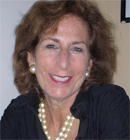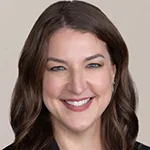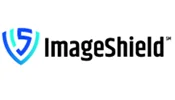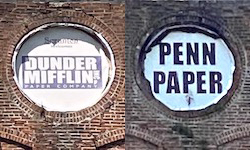There is news of two of the five "Secret Societies of PR" that this reporter outed in 1970, two years after starting the O'Dwyer Newsletter.
The sad news is that PR Society:New York is folding after more than 50 years. Jill Totenberg of the Totenberg Group, New York, said, "The scope, pace and location of our work lives have made it increasingly difficult to get the attendance our speakers deserve."
 |
Gabriela Stern, deputy managing editor, Wall Street Journal Digital Network, will be the final speaker for the lunch May 8 at the Penn Club, 30 W. 44th st.
Initial coverage of the group listed 68 members who included PR heads of blue chip companies and major PR firms.
Among them were Richard Aszling, VP-PR, General Foods; Gordon Gilmore, TWA; Milton Kramer, Hertz; Bill McGaughey, National Assn. of Manufacturers; W.C. Parker, Campbell Soup; W.P. Raines, Johns-Manville; John Sattler, Ford; Jim Shanahan, Loew's; Sherm Stanbaugh, Celanese; Spencer Valmy, Colgate-Palmolive; Humphrey Sullivan, Lever Bros.; Howard Chase, Partners for Growth, and Robert Bliss, Bliss Assocs.
PR Execs Wanted Groups Exposed
PR executives who wanted to help the O'Dwyer NL, many of them fresh from newspapers and other media, were dismayed by the secrecy in PR and wanted the five groups exposed. They provided membership lists of each.
One result of the expose was that non-New York members of PR Society of America, angered by private New York groups monopolizing top posts at the Society, vowed to oust the New Yorkers and spread the posts throughout the U.S. They have been successful in doing that since the mid-1970s.
The biggest of the secret groups was PR Seminar, which changed its name to Seminar in 2007 (although its IRS 990 tax forms still use the name PR Seminar). More than 200 were on the invite list, mostly heads of blue chip corporate PR departments.
The Wise Men was a group started by Hill and Knowlton founder John Hill at a dinner in his apartment in 1938. There were no women members for many years. Dinners were held monthly at the University Club and included a speaker of note. Many of the same executives in PRS and PRS:NY were members of the Wise Men which continues to meet.
 Shop Talk was a monthly meeting of two of the top people at a dozen major New York firms. Salaries of employees and benefit packages were among the topics discussed. This was a violation of anti-trust laws which forbids business groups from discussing prices charged or prices paid. Soon after we wrote about Shop Talk, it disbanded.
Shop Talk was a monthly meeting of two of the top people at a dozen major New York firms. Salaries of employees and benefit packages were among the topics discussed. This was a violation of anti-trust laws which forbids business groups from discussing prices charged or prices paid. Soon after we wrote about Shop Talk, it disbanded.
Pride & Alarm Created APR
Pride & Alarm, so-named because PR people often "view with pride or point with alarm," was a group of about 30 that came up with the concept of accreditation that was later adopted by the PR Society.
Members included Richard Aszling; Alan Bell of Bell & Stanton; Harold Burson, Burson-Marsteller; Bill Cook, U.S. Steel; Bill Durbin, H&K; James Fox; Bill Gaskill, T.J. Ross; Bill Lydgate, Earl Newsom; Edward Pendray; Ward Stevenson, Citibank, and Sally Woodward, Flanley & Woodward.
Numerous Other NY PR Groups Folded
PR Society:NY is joining in the graveyard about a dozen other "public" PR groups from the 1970s/80s including Chemical Communications Assn.; Financial Relations Society; Hospital PR Society; Paper Industry PR Group; PR Roundtable (house PR people of PR firms, ad agencies); New York Business Communicators; Monday II Group (corporate); Wall Street Irregulars; Wednesday PR Group, and New York Airline PR Assn. Women Executives in PR merged in 2006 with Ad Women of New York.
Publicity Club of New York, under the leadership of Peter Himler, continues to have a regular program. In its heyday, it had nearly 800 members and had "Thirsty Thursday" meetings each week.
As for reasons for the disappearance of the groups, the most obvious is that many major PR firms, having been acquired by the ad conglomerates, went "dark," withholding information that previously had been disseminated. Their employees were discouraged from participating in outside groups.
The conglomerates are security-conscious, fearing leaks about campaigns that could cost in the hundreds of millions. They also felt the PR groups were prime job-hopping exercises and did not want to lose valuable employees that way. Keeping costs to a minimum was another motive since the conglomerates needed to maximize profits.
The Texas PR Assn., nearly 50 years old, dissolved as of Dec. 31, 2011. Larry Meltzer of MM2 PR, Dallas, president of the group, said membership had been in decline for years and the financial situation had become "fragile."
Seminar Shocks with Public Website
Veteran Seminarians were shocked with the recent unveiling of a website by the group that could be accessed by the public: www.theseminar.biz
They offer two reasons. One is that Seminar is desperate for new members since so many keep losing their jobs. Another is that members have to justify spending four or more days at one of the swankiest resorts in the U.S. at a total cost of nearly $1 million (including the $3,500 registration fee, hotel, travel, meals, golf and other costs).
Rank-and-file PR people who wonder where all the money has gone that used to fund their lunches and outings need only take a look at high-living Seminar and such organizations as the Arthur W. Page Society and Council of PR Firms.
Page, whose dues are $1,345, has just unveiled a senior professional development program whose initial cost is $3,750 per member. Member firms of the CPRF, whose U.S. revenues are more than $70 million (which includes all the major conglomerate-owned firms such as Burson-Marsteller, Hill & Knowlton, Weber Shandwick, etc.), pay annual dues of $40,000. Dues are .65% of revenues. Kathy Cripps, president of CPRF, had a pay package of $336,114 in 2011 including a $30,000 bonus.
Not much money is left for the PR peons!
Seminarians Burst with Pride
The new Seminar website starts off with this sentence:
"For more than 60 years, The Seminar has been the premiere organization of the highest-ranking communications and public affairs executives of the world's most influential corporations, nonprofit organizations and public relations agencies."
It says Seminar (EIN: 41-1838593) "is not about the practice of communications, focusing instead on topics such as technology, economics, healthcare, the environment and more."
This is odd because "communications" is in the titles of 65 of the 138 attendees in 2012 at the Park Hyatt Aviara Resort north of San Diego. There were 35 new members meaning approximately that number of PR executives either quit, retired or otherwise lost their jobs because there is a finite number of openings at Seminar.
In 2011, when the meeting was June 5-8 at the Ritz-Carlton, South Beach, Fla., there was a record 49 inductees, testimony to the insecurity of PR posts at corporations. In the 1970s and 80s, Seminar typically inducted 7-10 new members yearly. In those days, members stayed for life no matter what happened in their jobs. In recent years, loss of a job means loss of the invite to Seminar after one year.
Seminar Meets at Half Moon Bay
 This year's meeting is June 2-5 at the Ritz-Carlton at Half Moon Bay off the coast of California (pictured), a resort notorious as a symbol of corporate excess.
This year's meeting is June 2-5 at the Ritz-Carlton at Half Moon Bay off the coast of California (pictured), a resort notorious as a symbol of corporate excess.
AIG, which had received $85 billion in bailout money from the U.S. Government in 2008, had scheduled several days of play there for top salespeople after just spending $440K at another resort for the same reason. Half Moon was cancelled.
Chair of the 2013 Seminar is Gerard Meuchner, who was with Eastman Kodak from 2000-2012, rising to director of corporate communications and PA. He is now with Henry Schein, Inc., Melville, New York, healthcare products, as chief global communications officer. He was a reporter at Bloomberg News from 1990-2000.
Program chair is Betty Hudson of National Geographic Society and secretary-treasurer is Clay McConnell.
Seventeen of the 32 members of the governing committee of Seminar are also members of Page including Hudson, Paul Bergevin of Intel; Barry Caldwell, Waste Management; Christa Carone, Xerox; Daniel Collins, Corning; Ray Day, Ford; Dave Demarest, Stanford; Herbert Heitmann, Royal Dutch Shell; Bill Heyman, Heyman Assocs. recruiters; Clartkson Hine, Beam; Jolie Hunt; Kim Hunter, LaGrant; Jon Iwata, IBM; Ray Jordan, Amgen; Mike Paul, MGP & Assocs.; Johanna Schneider, Burson-Marsteller, and David Senay, Fleishman-Hillard.


 AB InBev has hired Donna Lorenson as chief communications officer and elevated the PR function to the senior leadership structure in the aftermath of the Bud Light marketing disaster.
AB InBev has hired Donna Lorenson as chief communications officer and elevated the PR function to the senior leadership structure in the aftermath of the Bud Light marketing disaster. Tunheim handled the Minnesota USA World Expo bid committee, which on June 21 congratulated Serbia for landing the 2027 event.
Tunheim handled the Minnesota USA World Expo bid committee, which on June 21 congratulated Serbia for landing the 2027 event. United Minds, management consultancy, has launched Myriant, a business resiliency offering to help clients deal with the challenges during this era of misinformation, polarization and geopolitical upheaval.
United Minds, management consultancy, has launched Myriant, a business resiliency offering to help clients deal with the challenges during this era of misinformation, polarization and geopolitical upheaval.  ImageShield, which guards against online image abuse, is looking for a communications pro to handle its PR and marketing campaigns.
ImageShield, which guards against online image abuse, is looking for a communications pro to handle its PR and marketing campaigns. Who knew that there is a real paper company, Pennsylvania Paper & Supply, inside the iconic building seen at the opening of every episode of “The Office?”
Who knew that there is a real paper company, Pennsylvania Paper & Supply, inside the iconic building seen at the opening of every episode of “The Office?” 


 Have a comment? Send it to
Have a comment? Send it to 
No comments have been submitted for this story yet.